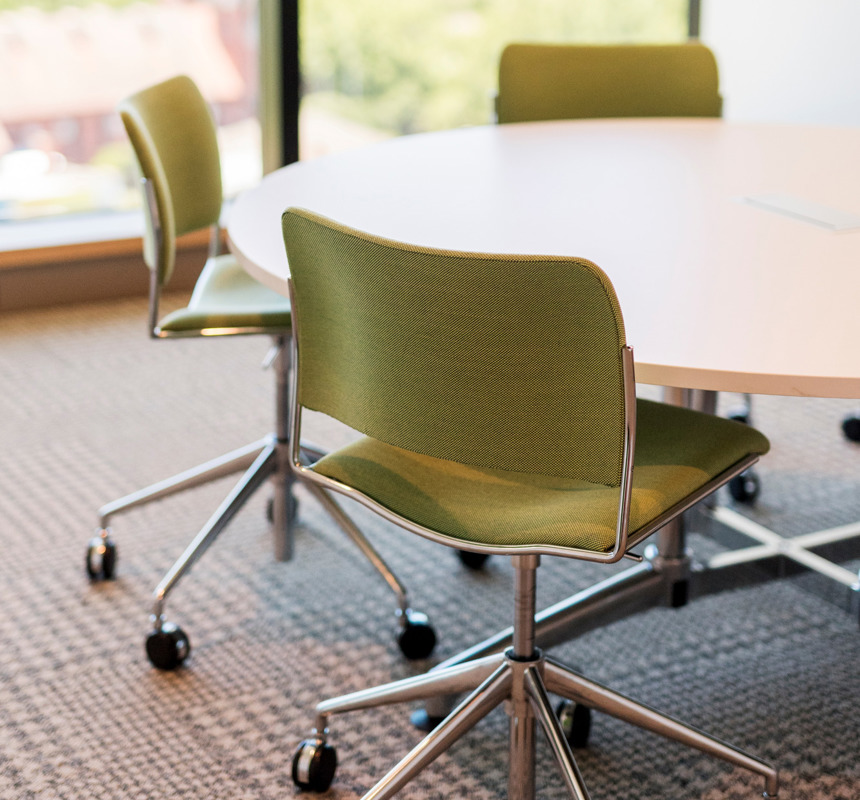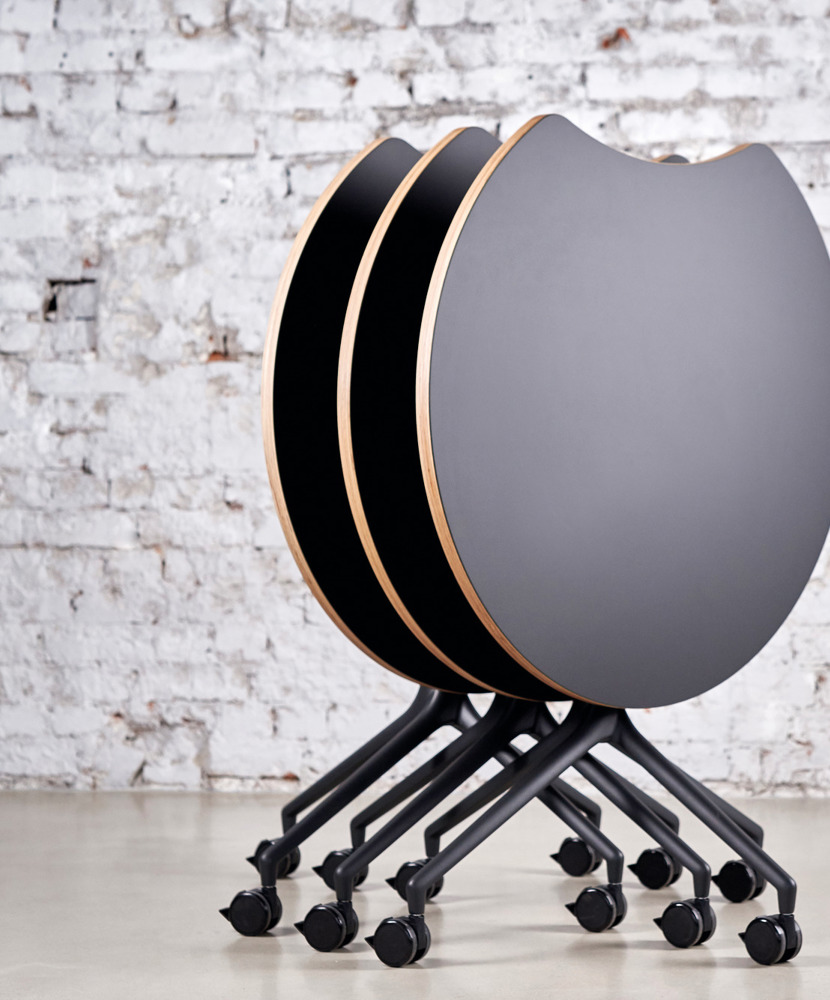The dilemmas of sustainable furniture manufacturing
In our era of environmental consciousness, the furniture industry is at a critical juncture. As consumers increasingly seek eco-friendly materials paired with original design, manufacturers grapple to balance sustainability, functionality, and economics.
This article delves into the crucial aspects of ecological furniture, detailing seven key parameters that any honest manufacturer will talk about in their journey towards sustainable production.


1. Balancing recycled materials and longevity
The right materials are a cornerstone of sustainable furniture manufacturing. They empower customers to create ethical and environmentally responsible spaces. And while it is common for makers to tout furniture of recycled make-up as perfectly sustainable, the choice between recycled and virgin content is tricky; recycled materials reduce waste and promote eco-friendliness, yes, but they do not always meet durability and fire safety standards, for instance.
Sourcing prices and the availability in sufficient quantities of materials must also be factored into the equation. Ultimately, reconciling such considerations can promise a sustainable yet durable end product.
As an example, when preparing the launch of our SixE recycled shells, maintaining consistent hues for all shades of the chair was the primary hurdle. We found that not all colours could be created from exclusively repurposed material — for some, pigments had to be added to the recycled plastic, requiring the use of virgin plastic as a carrier. Truly, it is never just strength and durability that matter, but the visual appeal of the product in the long run.
With patience, we were able to realize a desirable balance between recycled make-up and aesthetics, and are happy to report the carbon footprint of recycled material production used to mould our SixE shells to be 4 times smaller than that of virgin plastic production.


2. Fire resistance and material composition
Sustainability cannot cost in safety. This is why manufacturers conduct rigorous fire tests to ensure their products meet or exceed industry standards. And the reality is certain highly sustainable materials, like glass-fibre-free recycled plastics, can fall short of these important standards: stringent fire resistance and the like. And while recycled plastics are greener by some measures, they can require special treatments like fire-resistant additives.
Thus, the design and creation of globally available eco-friendly furniture is challenging, with safety and sustainability needing harmonized through a constant juggling act.
Because of such variables, HOWE sometimes refrains from incorporating recycled content in original designs that would make the designs fall short of fire safety or durability standards and, therefore, unavailable on all our core markets.
HOWE prioritizes designs that are universal in application, incredibly long-lasting, and cradle-to-cradle at the end of their life cycle.
3. Chemical considerations: adhesives, finishes, and emissions
Beyond raw materials, furniture manufacturers must scrutinize the chemicals used in adhesives, finishes, and coatings. Water-based adhesives and finishes have gained traction due to lower emissions and reduced environmental impact compared to their solvent-based counterparts. Still, they can require unique application techniques, complicating specific aesthetic finishes. Composite materials, which combine several substances for enhanced properties, present distinctive challenges to sustainability as well; while they offer versatility and can blend recycled elements, manufacturers must carefully consider their potential drawbacks such as difficulties sourcing sustainable raw materials and complex recycling processes.
At HOWE, we develop safe and non-toxic products to reduce emissions and chemicals, producing an absolute minimum of both. And we only use materials and chemicals that do not pose any environmental risk to water supplies and are safe at all stages of life. For instance, we avoid using Formaldehyde, Per- And Poly-Fluorinated Alkyl Substances (PFAS), Polyvinyl Chloride (PVC), Antimicrobials (Especially Triclosan and Triclocarban), or Flame Retardants in the production of HOWE components and/or products whenever possible.
We also prioritize designs like the SixE chair - universal in application, incredibly long-lasting, and, most importantly, cradle-to-cradle at the end of its life. Minimalist in material usage and fiberglass free, the SixE chair reflects our original aim of a forward-thinking take on furniture.

4. Supply chain, transportation and carbon footprint
The transportation of furniture components can contribute significantly to its overall environmental load. Evaluating this impact and finding ways to minimize it isn’t always easy, for furniture is part of an intricate supply chain, with raw materials sourced from different regions, manufacturing taking place in various locations, and distribution to global markets. What’s more, many furniture companies rely on the long-distance transport of raw materials, which means increased emissions, especially when materials are sourced internationally. Needless to say, coordinating any supply chain efficiently, with trimmed emissions, is a considerable feat.
But did you know that recycled materials can actually create a larger carbon footprint in cases of overseas transport? Indeed, using locally sourced virgin materials for production can be better compared to collecting specific types of waste for repurposing in an energy-intensive overseas production process.
This is why, whenever possible, HOWE chooses local suppliers to avoid long-distance transportation of components. We also organize our supply chain and product logistics in such a way that our trucks are fully loaded, and drivers’ routes optimized.
Moreover, we work with logistics partners who use energy-efficient vehicles that further reduce our resource use. However, while local sourcing reduces transportation emissions, it can make it harder to secure specialized materials and expertise. Here, too, manufacturers such as us must diligently weigh the benefits — in this case, of reduced emissions against the potential limitations of relying solely on local resources.


5. Lifecycle assessments
More and more, furniture manufacturers are encouraged to conduct comprehensive lifecycle assessments to evaluate the environmental impact of their products, cradle to grave. Included are factors such as raw material extraction, production processes, transportation, and end-of-life disposal. It can be difficult to gather all this in-depth data, but manufacturers who are actively working to trace the origins of their materials are the ones ensuring responsibly sourced and produced end products.
A company might invest in timber from forests certified by the Forest Stewardship Council (FSC), which guarantees sustainable forestry practices. At the same time, assessing the environmental impact of furniture may require more time for material sourcing, manufacturing, and quality control, which can lead to longer waiting times for customers.
Additionally, furniture that undergoes rigorous sustainability assessments and is made with such high-quality materials may come with a higher price tag, which brings into question the economic justification for the investment.
At HOWE, we aim to produce outstanding functional design with minimal environmental impact — at every step in the process. By following our HOWE Sustainable Design Guidelines, we maintain the highest standards for both new and existing designs while setting the right tone and focus for continuous improvements. By sharing all our information in detail — concerning our commitment to this responsible move — we help customers everywhere to achieve their own sustainable goals.


6. Multi-functional and adaptable design
Another critical aspect of sustainable furniture is versatility — i.e., pieces that adapt to changing needs and spaces. Manufacturers are ever more embracing these multi-functional and adaptable designs that allow customers to reconfigure or repurpose their furniture rather than discard it. Universal design, or an aesthetic that fits many styles, is essential to this versatility; furniture of a timeless look will last for generations and will not need to be replaced as trends come and go, greatly reducing its environmental impact.
Definitely, a classic piece that stays relevant proves a sound investment in both financial and ecological terms.
Thus, when we design furniture, we actualize its versatility, so it can adapt to different preferences and styles. Our pieces aren’t likely to become outdated or undesirable — they enjoy a long lifespan, reducing overall waste.
With a rich heritage tracing back to 1928, HOWE has consistently pushed the boundaries of furniture's potential. We offer an extensive range of furniture options that integrate beautifully into a variety of spaces, fulfilling both functional and aesthetic parameters, and continue to lead the way with transformative and adaptable solutions.
With a rich heritage tracing back to 1928, HOWE has consistently pushed the boundaries of furniture's potential.
7. Responsible disposal and recycling
The journey towards sustainability doesn't end with the sale of a product. Makers are always looking for better ways to dispose of and recycle furniture at its life’s end. This may involve take-back programs, collaborating with recycling facilities, or repurposing old materials into new products.
Every HOWE product is designed for easy disassembly enabling greater material recovery and refurbishment and more effective recycling. Comprehensive identification of the different types of plastic in every HOWE piece further boosts material recovery and value retention.
Additionally, all materials sourced at HOWE are selected based on their ability to maximize recycled content.
Attuning innovation, safety, and environmental stewardship is no easy feat, but one that industry leaders embrace wholeheartedly. As consumers become more discerning, the furniture of tomorrow will be a testament to the power of conscious craftsmanship and forward-thinking design.


Striving for progress: balancing green ambitions with practical realities
In the pursuit of sustainable furniture, it is helpful to acknowledge that you usually can’t have it all; deciding what matters today becomes crucial. And in the end, every big journey begins with a small step.
The use of even 20% recycled content can make a significant positive impact and is better than nothing. It is a step in the right direction that diverts waste from landfills and reduces demand for virgin resources. As such, sustainability is a matter of "weighing the costs" and making conscious decisions that temper environmental aspirations with practical realities.
This perspective doesn't impede the delivery of high-quality furniture; instead, it encourages us to seriously consider where improvements can be made and to recognize the right time for each improvement.
We are reminded that environmental consciousness isn't about perfection, but progress — the willingness to continuously refine our ways for a greener future, whenever and wherever possible, but not at all costs.
Sustainable and eco-friendly furniture make a pillar of responsible living and working. While there are manufacturing obstacles, the industry is committed to finding innovative fixes, promoting transparency and informed choices along the way. For furniture makers, turning green ambitions into material achievements is a matter of creating products that combine environmental responsibility with longevity.


Adaptability = Sustainability
We can’t forget that paramount in the move towards sustainable spaces are flexible office layouts, collaborative furniture, and adaptable workspaces. These pieces are designed to evolve with the dynamic needs of modern workplaces, promoting a culture of innovation and productivity.
Adaptable furniture pieces are the building blocks of a flexible office layout. Pieces that can serve multiple functions, such as a dining table that promptly transforms into a functional desk, a shell chair that gracefully moves from a company cafeteria to a meeting room, or a bracket-mounted privacy screen that morphs into a modesty panel — pieces that use space smartly. They not only promote efficiency but also reduce the need for excess furniture, minimizing waste.

EMPOWERED TO MAKE RIGHT CHOICES
As consumers, we have the power to amplify this movement by supporting makers who prioritize sustainability. By choosing eco-friendly furniture, we contribute to a more ethical and environmentally responsible future.
Together, we can create spaces that not only inspire creativity and productivity but also reflect our commitment to a sustainable world.
One piece of furniture at a time.





